Archeotrekking
Rupestrian Necropolises
__________________________________________________________________________________________
Discovered the ancient etruscan necropolises of Lazio Region. You can choose different kind of tours or itineraries.
The rupestrian necropolises of Lazio were cut into the tufa rocks and were also decorated with reliefs and geometrical patterns
__________________________________________________________________________________________

Castel d’Asso
This etruscan necropolis is not too far from the Viterbo town, the capital city of Viterbo Province
_________________________________________________________________________________________

The Archaeological Area and the Natural Park of Marturanum
The most distinctive features of this area are the natural and archaeological treasures such as the old etruscan necropolises, the ancient roman thermal baths
_____________________________________________________________________________________________
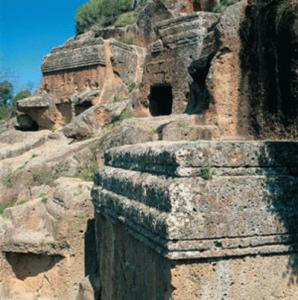
Norchia
Probably the most famous rupestrian necropolis of Viterbo Province. This area is characterized by the presence of etruscan tombs entirely carved into the tufa rocks
_________________________________________________________________________________________
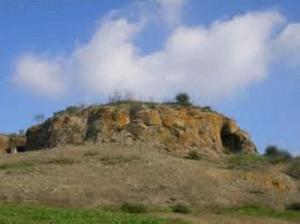
Grotta Porcina
The most important monument of this archaeological area is the etruscan tomb renowned with the name of " The Big Wheel" dating back to the VI century B.C
_________________________________________________________________________________________
The old Medieval towns of Tuscia Area
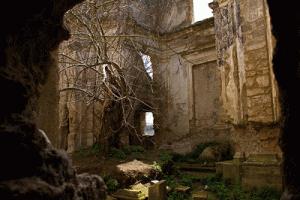
The ghost town of Monterano
The Medieval town of Monterano was completely abandoned during the XVIII century, after the raid of the french in the territories of Lazio Region. You can presently admire the ruins of several monuments and buildings probaly made by the most important architect of the Baroque era: Gian Lorenzo Bernini
_________________________________________________________________________________________

Calcata and the Natural Park of Treja Valley
The old Medieval town of Calcata is situated on a top of an high tuffacceus hill. Lovely and peaceful place, in the 1930s, the hill towns's fortified historic center was condemned by the government for fear that the volcanic cliffs the ancient community was built upon would collapse. Local residents moved to nearby Calcata Nuova. In the 1960s, the emptied historical centre began to be repopulated by artists and hippies who squatted in its medieval stone and masonry structures. Many of the squatters eventually purchased their homes, the government reversed its condemnation order, and the residents of what had become an artistic community began restoring the ancient town.
_________________________________________________________________________________________
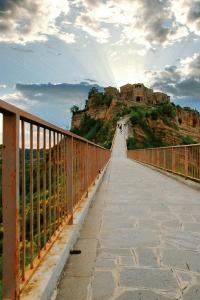
Civita of Bagnoregio: The Ghost Town
The town is noted for its striking position on a top of a plateau of friable volcanic tuff overlooking the Tiber river valley, in constant danger of destruction as its edges fall off, leaving the buildings built on the plateau to crumble. As of 2004, there are plans to reinforce the plateau with steel rods to prevent further geological damage. The city is also much admired for its architecture, some spanning several hundred years. Civita di Bagnoregio owes much of its unaltered condition to its relative isolation: the town was able to withstand most intrusions of modernity as well as the destruction brought by two world wars. The population today varies from about 12 people in winter to over 100 in the summer.
_______________________________________________________________________________________
Cradle of Civilization

The etruscan necropolis of Tarquinia
The most distinctive feature of this archaeological area is the presence of different kind of tombs dating back to the VI century B.C. The internal funeral chambers of this tombs are also decorated by frescoes, rare example of the etruscan painted decoration
_________________________________________________________________________________________
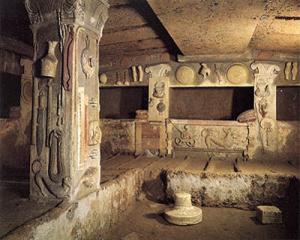
The etruscan necropolis of Cerveteri
The archaeological area of Banditaccia is one of the most extended necrolises in the world. The area is characterized by the presence of a a large numbers of tombs and different kind of burials. Is presently preserved such as an important world cultural heritage by UNESCO
_________________________________________________________________________________________

The natural and archaeological park of Vulci
In this lovely area you can admire beautiful natural elements and the ruins of the ancient roman town and etruscan necropolis
_________________________________________________________________________________________
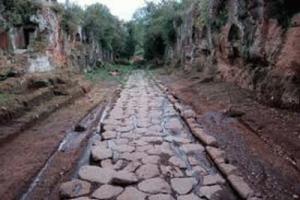
The amerina Road and the archaeological settlement of Falerii Novi
You will discovered, along the ancient roman path of the Amerina road, the ruins of roman's and etruscan's tombs and also the ancient town of Falerii Novi. This town was completely rebuilt by the romans after the destruction of the capital city of faliscan people, originally situated in the territories occupied by the modern town of Civita Castellana renowned in the elder ages, with the name of Falerii Veteres
_________________________________________________________________________________________
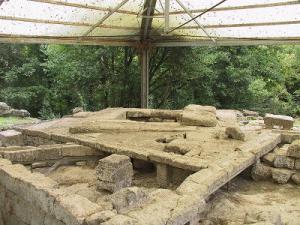
The archaeological settlement of Saint Giovenale and Luni along the Mignone River
The ruins of an important etruscan necropolis and the remains of an ancient aristocratic dwelling are still visible in this area. Rare and singular example of ancient italic households, discovered in the etruscan territories
_________________________________________________________________________________________
